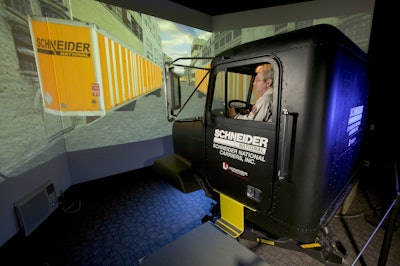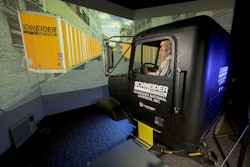
Training on demand
A number of companies today provide interactive, online training courses that cover a variety of topics. The courses are wrapped into web-based learning management systems (LMS) to give fleet managers an efficient way to assign training to drivers and track their results.
J.J. Keller has more than 40 transportation-specific training modules in its Training On Demand product. The modules are available to fleets through an online subscription which also allows fleets to upload their own training videos and materials for company-specific topics.
Training On Demand has a web-based LMS that will soon be integrated with J.J. Keller’s driver management system, Encompass, to enable users to assign coursework to drivers from the same portal they use to monitor driver safety, compliance and performance information.
 Click to see a training video on distracted driving by J.J. Keller
Click to see a training video on distracted driving by J.J. KellerToday, the Encompass portal and Training On Demand are two separate websites. As part of the first phase of integration, scheduled to be completed within 60 days, the list of drivers in the LMS will be populated directly from the current list of drivers in the Encompass portal, says Joel Landsverk, product development manager-Training On Demand.
Another forthcoming feature will record the courses drivers complete in Encompass and also allow managers to assign training to drivers directly from Encompass, he says.
Brown Integrated Logistics has been using a web-based training system called Infiniti-i for more than two years. The company also uses the online Pro-Tread training videos from Instructional Technologies, Inc. It primarily assigns Pro-Tread modules to drivers following violations and problems they have had with safety and compliance, says Brian Kinsey, president and chief executive officer.
Both of these online training modules are readily available to drivers at each terminal location where a computer station, or kiosk, is dedicated for that purpose. Whether drivers login in the office or from their own connected devices, they immediately see the modules they have been assigned.
The return on investment from online training technology is hard to measure, Kinsey says, since the company has always had a good safety record. Where Kinsey believes the technology has made a difference is with driver retention by improving their safety performance.
“I think it is noticed by drivers,” he says. “If they have a problem, instead of cutting them off we work with them. If they are willing to go through training we re-certify them.”
Simulated training

The American Transportation Research Institute (ATRI), a subsidiary of the American Trucking Associations, recently examined the safety impacts of simulator training for truck drivers. The results suggest that engaging in any type of driving simulator training could enhance driving performance, but results are strongest using full-scale simulators.
Inherently, driver simulators are more efficient than training behind the wheel using company equipment. Schneider National reported that a four-hour long behind-the-wheel course can be successfully completed in one hour on a simulator. The company suggested that a $40 per hour cost savings could be experienced from simulator training when factoring in the amount of fuel saved.
The training can be more effective too. ATRI found the most effective ways fleets use simulators is to identify unsafe driving behaviors and then target their training to drivers’ performance.
ATRI looked at the safety record of drivers that received simulator training over a one-year period. Due to the high rate of driver turnover in its sample, ATRI was unable to reach any conclusions about the impact of driver simulator training. What it did find is that most drivers have a favorable opinion of the technology as a training tool.
The common denominator among modern training tools is the ability to reach more drivers, more often, with training that is targeted to their individual needs.






![photo[66]](https://img.ccjdigital.com/files/base/randallreilly/all/image/2014/02/ccj.photo66-e1392329269953.png?auto=format%2Ccompress&fit=crop&h=167&q=70&w=250)






